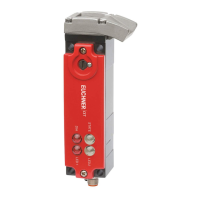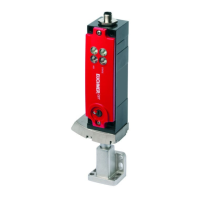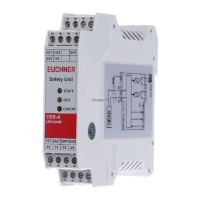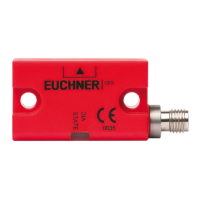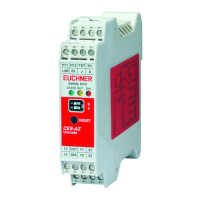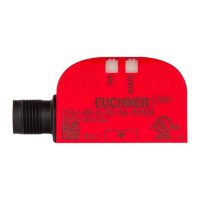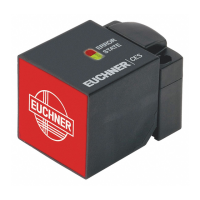15
2110788-13-03/20 (Translation of the original operating instructions)
Operating Instructions
Transponder-Coded Safety Switch CET.-AR-…
EN
7.4. Wire front release (optional)
Release via a pull wire. Depending on the type of attachment, the wire front release can be used as
emergency release or escape release.
The following applies to non-latching wire front releases:
If the release is to be used as an emergency release, one of the following measures must be taken
(see EN ISO 14119:2013, section 5.7.5.3):
Ì Install the release so that it can be reset only with the aid of a tool.
Ì Alternatively, resetting can be realized at the control-system level by means of a plausibility check
(status of the safety outputs does not match the guard locking control signal), for example.
The emergency-release specications in chapter 7.2 on Page 13 apply irrespective of this infor-
mation.
Important!
Ì The wire front release meets the requirements of Category B according to ENISO13849-1:2015.
Ì The correct function depends on the laying of the pull wire and the attachment of the pull handle,
and this is the responsibility of the plant manufacturer.
Ì The actuator must not be under tensile stress during manual release.
7.4.1. Laying wire front release
Important!
Ì Loss of the release function due to mounting errors, damage or wear.
Ì Check the release function every time after mounting.
Ì When routing the wire front release, ensure that it operates smoothly.
Ì Observe the min. bending radius (100mm) and minimize the number of bends.
Ì The switch is not allowed to be opened.
Ì Please observe the notes on the enclosed data sheets.
8. Changing the approach direction
1. Remove the screws from the safety switch and take the head off the safety switch.
2. Place the ramp in the required approach direction.
3. Tighten the screws with a torque of 1.5Nm.
Figure 1: Changing the approach direction
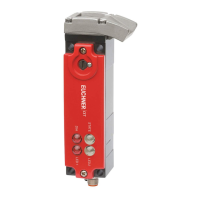
